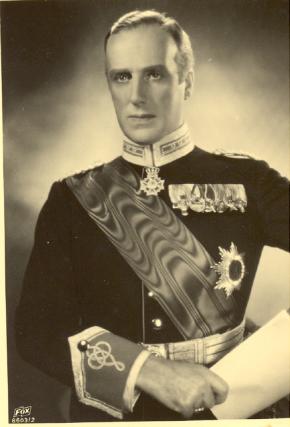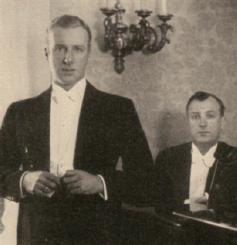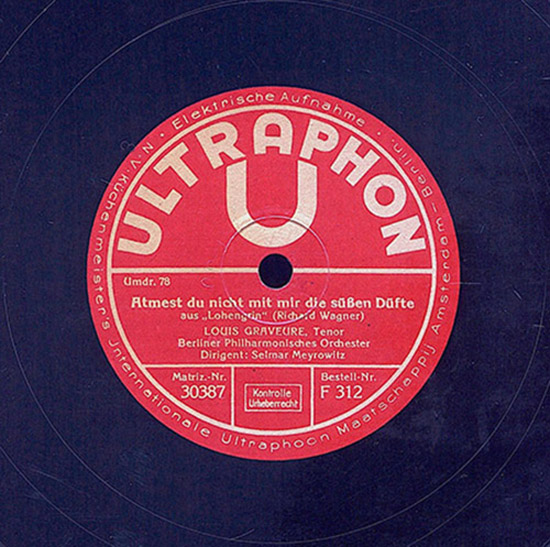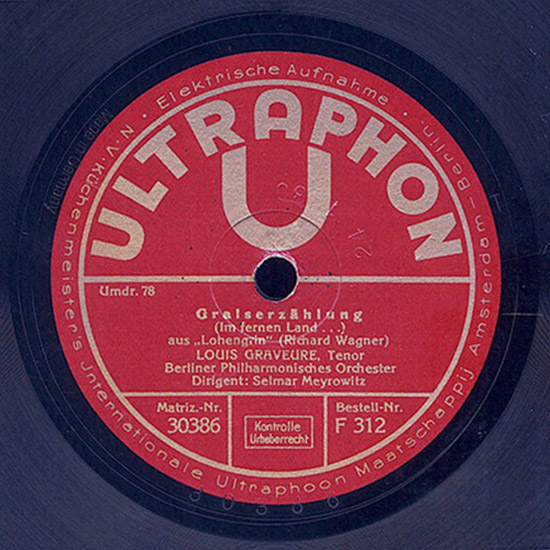Louis Graveure
18 March 1888 London – 27 April 1965 San Francisco
 |
 |
 |
| click on pictures to enlarge | film "Ein Walzer für dich" | with Michael Raucheisen
|
His real name was Wilfrid Douthitt, and that he, in spite of having been recognized by the press, always denied that
he and Douthitt were the same person, turned out to be a really smart marketing strategy: now baptized "the mystery man", or
"a case like Dr. Jekyll and Mr. Hyde", he became suddenly much more interesting than a concert baritone could ever expect.
Wilfrid Douthitt had studied voice in England (with Clara Novello-Davies), and architecture at the Royal College of Art, and
he had traveled Canada and South Africa. In 1914, he sang one of the leading roles in the US premiere of Charles Cuvillier's
German operetta Der lila Domino in New York – unsuccessfully.
One year later, a concert baritone called Louis Graveure made his debut in Portland in Elijah; and although or because
enough people remembered and recognized him as Douthitt, he stoutheartedly claimed to be Belgian, and to never have heard of
Douthitt: the "mystery man" was born. Soon, his records sold well, he gave concerts all over the States, and lived a posh life.
In 1916, he married operatic soprano Eleanor Painter, who had studied in Berlin, and from 1920, also Graveure traveled to
Berlin and gave (very successful) concerts. Other than that, he taught voice at the State Institute of Music in East Lansing
during the 1920s.
On February 5th, 1928, he gave a concert at New York Town Hall – as a tenor, all of a sudden. (One week earlier, he had
still sung as a baritone in public!). The same year, he moved to Europe; in 1929, he made his tenor stage debut at the Deutsche
Oper Berlin: as Don José to Sigrid Onegin's Carmen, no less. The Deutsche Oper was to become his principal theater; he
was enormously successful there, although he sang very few roles: apart from Don José, just Rodolfo, Lyonel, Lohengrin,
Gounod's Faust and Canio.
His good looks and his acting abilities earned him several leading roles in German music films. And he certainly lived the life
of a movie star: for several years, he had a liaison with actress Camilla Horn (Eleanor Painter had already divorced him
several years earlier), and lived in Horn's luxurious villas in Berlin and on the Côte d'Azur.
The Côte d'Azur villa was also where Graveure fled when in 1938, the Nazi regime all of a sudden suspected him to be a
spy. He stayed and sang in France until the Nazis occupied the country in 1940; then he wanted to go to the USA, but ended up
in the UK, and only in 1947, he could cross the Atlantic. He lived now in New York, where he gave a comeback recital, which
was no success, though.
Later on, he moved to Los Angeles, where he taught voice and lived at the Villa Carlotta luxury apartment building.
Reference 1, reference 2, reference 3: Kutsch & Riemens
In RA format
I wish to thank Anton Bieber for the Lohengrin and Ein Walzer für dich recordings and label scans.
I wish to thank Daniele Godor for the Martha recording and pictures (right and left).
Graveure as a baritone
|





